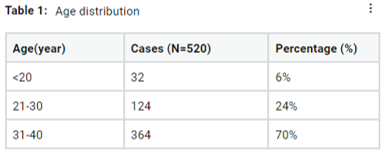Abstract
Present study to evaluate and detect thyroid dysfunction and its correlation in patients with a menstrual disorder in the reproductive age group. Research objectives are to study the prevalence of thyroid disorders in relation to menstrual disorders and study the correlation between menstrual irregularities and thyroid dysfunction. Precise assessments of thyroid hormones in serum become achievable easily and accurately with the introduction of new hormographical research techniques. Hypothyroidism diagnosis is advantageous because it typically relieves the patient of all symptoms. Therefore, the assessment of thyroid activity forms an essential component for the evaluation of a female with menorrhagia or otherwise menstrual irregularities. The individuals are rescued from repeated curettage from hysterectomy by early diagnosis of hypothyroidism Objectively measured menstrual blood losses were 35 ml per menstrual cycle (patients in the age group <20 to 40 years). In the present study, 211 patients out of 520(40%) were having menorrhagia, followed by metrorrhagia (17%) and poly-menorrhoea (16%) bleeding patterns. The observations were carried out in the laboratory, and the results were validated using SPSS software. If the thyroid functioning is poorly examined, a range of diagnostic and medical therapies, including intrusive (surgical) as well as non-invasive (hormonal) treatments may result in the patients’ undue exposures.
Full text article
Authors

This work is licensed under a Creative Commons Attribution-NonCommercial-NoDerivatives 4.0 International License.

